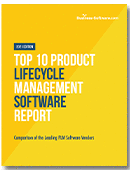Product Lifecycle Management
How to Define the Product Lifecycle

The product lifecycle, for marketing purposes, is usually defined as having four stages:
- Market Introduction – where the costs are high, the sales are slow, and revenues are dismal.
- Growth Stage – where there are increasing economies of scale, reducing costs. But at this stage, competition starts to increase, and the rising profitability is threatened by the need to lower prices to maintain or grow market share.
- Maturity Stage – where sales volume peaks, market saturation is reached, and prices continue to drop due to an increasing number of competing products.
- Saturation and Decline Stage – where sales volume declines and profits are derived from distribution and production efficiencies rather than increased sales.
This is a short version, of course. But even fleshed out, in this model there really isn’t a good time to make money on a product. In fact, this paradigm actually makes more sense from an accounting perspective than a marketing point of view.
If we keep the analogy of a life cycle, this approach would assume that human beings only exist from the time they enter the work force to the time they retire. But we don’t define ourselves that way. And I would suggest that marketers shouldn’t define products that way either. It ignores childhood and adolescence – or product concept and development – and life after the magic “65” – or ongoing products and services.
A product is far larger than these so-called “lifecycle” models would suggest. A product is a lynch-pin in a company’s overall marketing strategy. It is a building block in the company’s identity. It is a way to build the company’s reputation. Each product is a critical part of what that company is.
For the Chief Marketing Officer, the product lifecycle begins when the product is conceived and the company decides to move ahead with a new product or service. His or her knowledge of the marketplace and customer trends should be an invaluable resource in shaping the product’s development: needed features, what features are unnecessary (even if technically possible), where the competitive advantages lie, what its value propositions are, etc.
To wait for the product to be introduced to start dealing with these issues is the same as waiting to instill values into a child until he/she has left home.
How to Predict a Product Lifecycle
Marketing makes key contributions during both the introduction and the growth stages that can inform the product’s entire life and profitability. Now is the time that strategic messaging can create an indelible image in the mind of the marketplace, a message that clearly separates the product from those being introduced to compete with it. Done correctly, marketing can position the product as the innovator and leader in its market space, creating and/or enhancing the entire company’s positioning. Further, this forces competitors into a “me, too” position and forces them to compete on price, not value proposition (something for which the market is usually willing to pay more).
And what does the accounting mentality say about the “maturity” and “decline” stages? Oh, woe is me, pricing are continuing to go down and now sales are too. Nonsense. With rare exceptions, particularly in fashion or with “trendy” products, good products can continue indefinitely and continue to be profitable indefinitely.
What this model is actually predicting is the commoditization of a product, not market saturation and “decline.”
So for marketers with mature products in a heavily competitive space, the solution is not merely a product migration strategy to a product early in its “product lifecycle.” Indeed, the challenge becomes creating a new strategy, a repackaged message, an innovative way to market a commodity.
At its core, a product is not a stand-alone entity, separate from the company that has created it. It is not merely a revenue stream. A product is an essential part of a company’s branding and identity; and it should be seen as an important component of the company’s overall marketing strategy, whatever its stage in the product “lifecycle”.
 At its best, marketing is a dynamic function, sensitive to marketplace changes. It will fail every time it allows itself – or its products – to be defined by accountants, economists, or modelers. It will succeed when it is flexible and creative enough to understand a product’s real lifecycle, to see where opportunities lie, even when others tell them there are no opportunities.
At its best, marketing is a dynamic function, sensitive to marketplace changes. It will fail every time it allows itself – or its products – to be defined by accountants, economists, or modelers. It will succeed when it is flexible and creative enough to understand a product’s real lifecycle, to see where opportunities lie, even when others tell them there are no opportunities.
Want more on Product Lifecycle Management? Read news, reviews and exclusive content on Business-Software.com’s product lifecycle management research page. For side-by-side comparisons of the industry’s leading vendors, download the Top 10 Product Lifecycle Management report.






